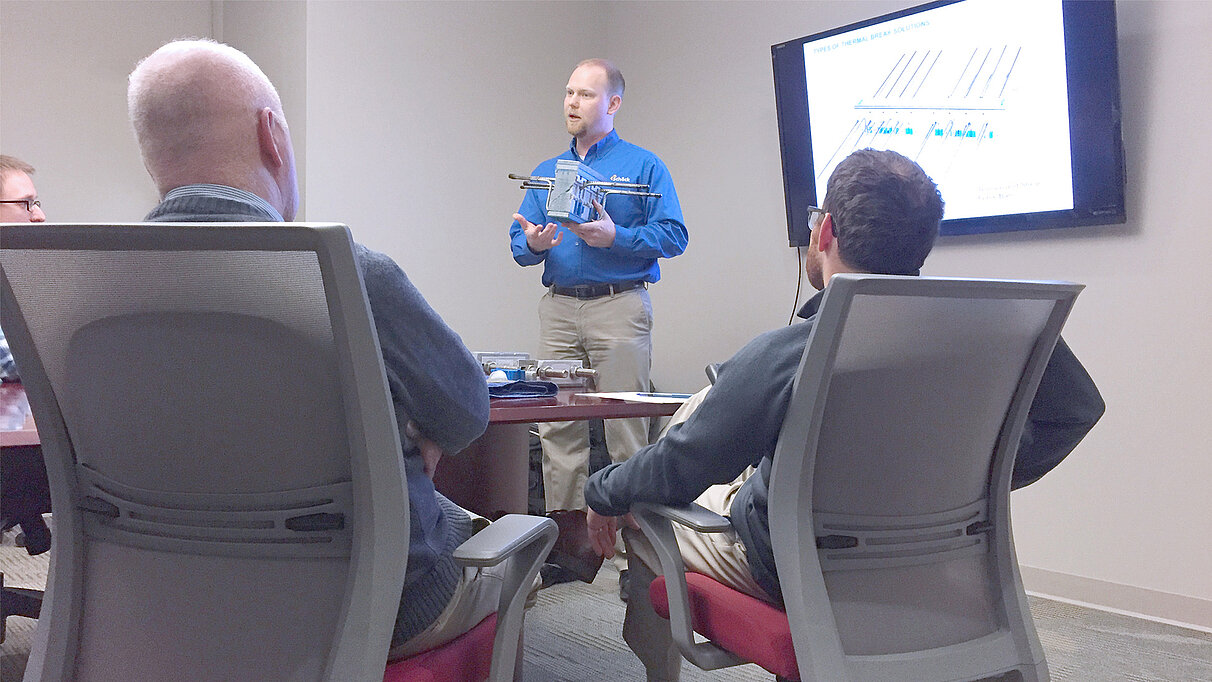Schöck Lunch & Learns.
Bringing structural thermal breaks expertise to you.
As an architect or engineer, it is essential to stay current with all aspects of design , including best practices and code requirements. Clients rely on your expertise to bring them the strongest solution, while creating an efficient building that complies with regional codes.
An important part of your expertise is having a solid understanding of where, when and how to address thermal bridging in your building envelope design.
plus

Schöck Lunch & Learns offer a way to bring this knowledge directly to you and your team. Our educational sessions combine details and research from both Schöck and third party sources to advance your understanding of structural thermal breaks. We also discuss region-specific codes that are in effect currently, as well as upcoming changes.
What can you expect from a Schöck Lunch & Learn CE course?
Our main CE course is one hour in length – approximately 45 minutes of presenting with some time at the end for your questions – and is usually done via a Microsoft Teams video conference. In certain regions, in-person Lunch & Learns are offered, but they are limited and naturally depend upon current health-related circumstances.
The course is AIA-certified (1 LU/HSW, USA), AIBC-certified (1 LU, British Columbia) and AAA-certified (1 LH, Alberta). All attendees receive a Certificate of Completion via email that can also be submitted to other professional organizations for possible continuing education credit. We recommend checking ahead of time to confirm qualification requirements. Schöck submits AIA and AIBC credits to the respective organizations for attendees who provide us with a current member number.
Below is a brief summary of the course content:
Designing with Structural Thermal Breaks for Improved Comfort, Efficiency and Moisture Control
This CE course offers an introduction to the effects of thermal bridging in concrete and steel connections, such as balconies, canopies, parapets, slab edges and rooftop equipment. Possible solutions and their effectiveness will be discussed, including the benefits of utilizing structural thermal breaks. Attendees will learn where thermal breaks are most commonly used, how they can be incorporated in the building envelope design, and what benefits are gained by using them. Building codes relative to addressing thermal bridging will also be discussed, including relevant region-specific code requirements and upcoming changes.
To schedule a Lunch & Learn
Fill out this simple request form and we will get back to you to set it up.

